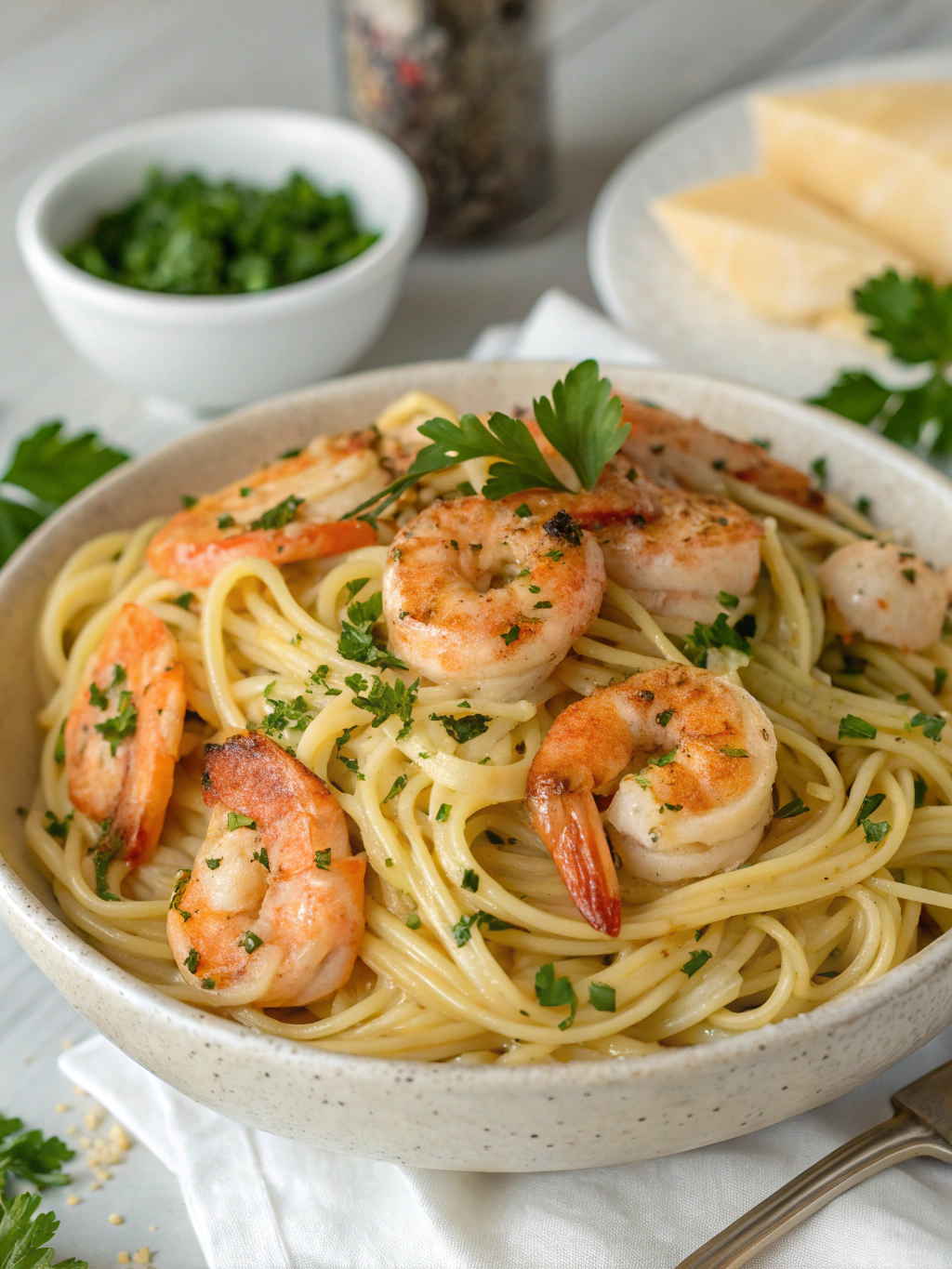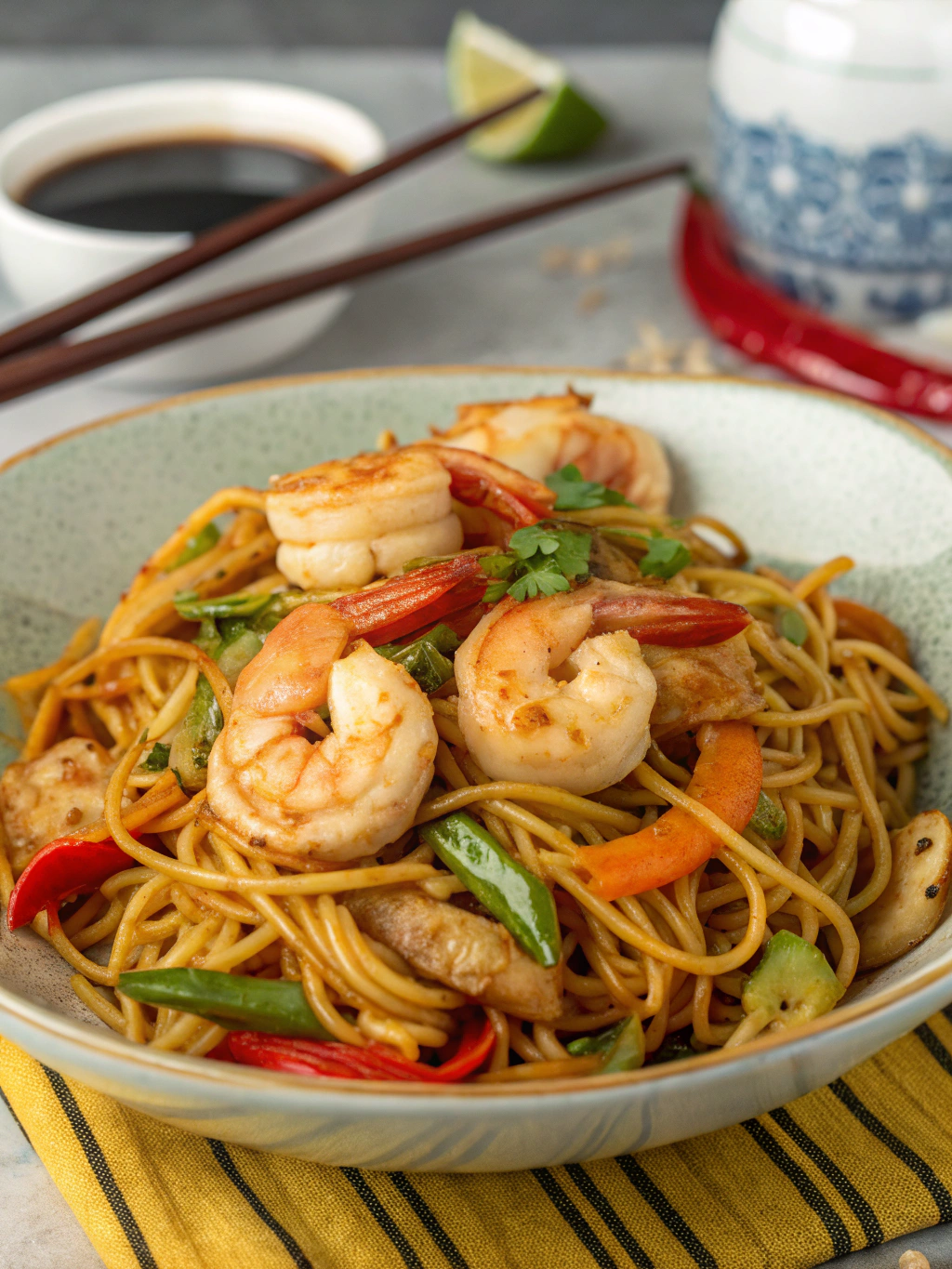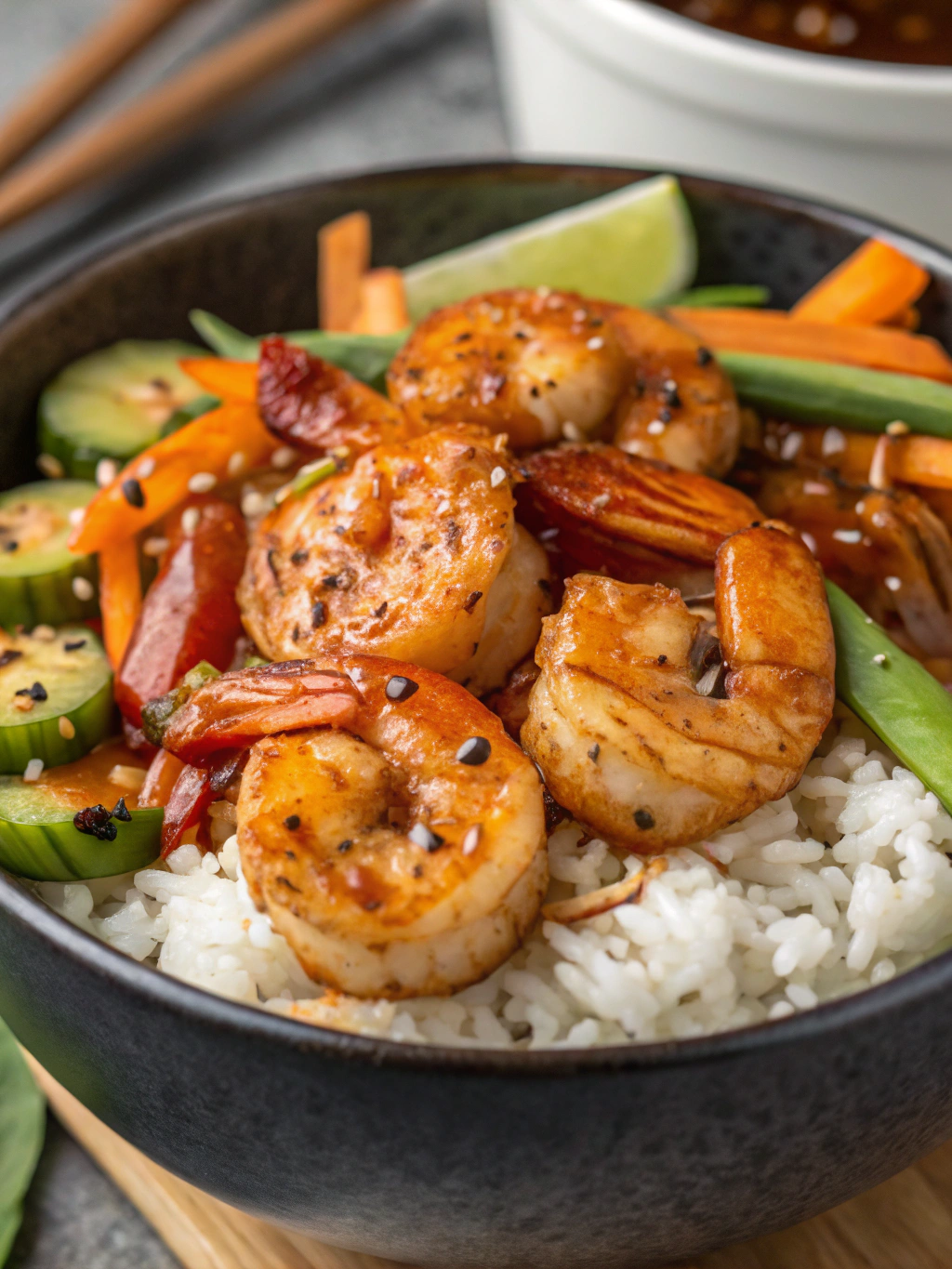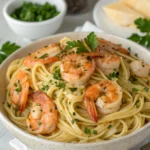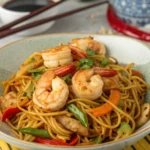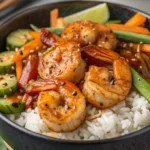Last Updated on March 24, 2025 by recipeinspire
Table of Contents
Introduction to Barramundi

Overview of Barramundi as a Fish
The Barramundi: A Culinary and Recreational Delight
The Barramundi Recipe, also known as the Asian sea bass, stands out as a versatile species, highly prized both as a culinary delight and a challenging sport fish. This fish, with its compact and elongated body, is a remarkable creature in the aquatic world. Its ability to thrive in diverse water types, from fresh to saltwater, makes it a unique species. Let’s dive into the fascinating aspects of the barramundi:
Key Characteristics
- Distinctive Body Structure: The barramundi’s body is relatively long compared to its other dimensions, featuring a long, concave head and a prominent lower jaw that extends past the eyes.
- Adaptable Habitat: These fish are found in a wide range across the Indo-Pacific region, from Africa to Japan, thriving in both salt and freshwater environments.
- Impressive Size: Adult barramundi can reach lengths of around 5 feet, almost the average height of an adult human, and weigh up to 120lbs.
Unique Biological Traits
- Sequential Hermaphrodites: Barramundi fish are known for their unique reproductive behavior, where they change gender from male to female as they mature.
- Rapid Growth: They grow quickly, reaching commercial size within two years, making them a sustainable choice for aquaculture.
- Diverse Diet: As opportunistic predators, barramundi consume a variety of aquatic prey, including crustaceans, molluscs, and even their own young.
Culinary and Recreational Aspects
- Sport Fishing: Due to their strong fighting ability, barramundi are a popular target for sport fishing, often sought after for “catch and release.”
- Cooking Versatility: The pinkish flesh of barramundi turns flaky white when cooked, with a sweet, buttery taste. This makes it a favorite in various cuisines, adaptable to numerous cooking methods like baking, grilling, and frying.
Conservation Status
- Least Concern: Despite significant commercial fishing, barramundi are classified as ‘least concern’, thanks to their wide distribution and frequent migration. However, ongoing monitoring is essential to ensure their sustainability.
In summary, the barramundi is not just a fish; it’s a symbol of adaptability and versatility, both in nature and in culinary arts. Its unique characteristics and widespread popularity underscore its importance in both ecological and gastronomical contexts. For more detailed information on barramundi, visit A-Z Animals.
Nutritional Benefits of Barramundi
A Powerhouse of Nutrients
Barramundi, often referred to as Asian sea bass or sustainable sea bass, is a treasure trove of nutritional benefits. This fish, native to Australia and the Indo-Pacific region, is not just a culinary delight but also a beacon of health. Let’s explore the myriad of nutritional advantages barramundi offers:
Essential Nutrients and Omega-3 Fatty Acids
- High-Quality Protein: Barramundi is packed with high-quality protein, essential for muscle building and repair.
- Rich in Omega-3 Fatty Acids: It’s abundant in omega-3 fatty acids, which are crucial for heart health and reducing inflammation.
Heart Health and Reduced Cardiac Risks
- Cardiovascular Benefits: The omega-3 fatty acids in barramundi play a significant role in cardiovascular health, helping to lower triglycerides and reduce the risk of arrhythmias.
- Artery Health: Regular consumption can slow artery plaque buildup, potentially reducing the risk of sudden cardiac death by 35%.
Additional Health Benefits
- Cognitive Development: Especially beneficial for pregnant or breastfeeding women, the omega-3 fats in barramundi can aid in the cognitive development of babies.
- Low in Contaminants: Farmed barramundi has minimal traces of mercury and polychlorinated biphenyls (PCBs), making it a safer option for sensitive groups.
Versatility in Cooking
- Adaptable Flavor: Barramundi’s sweet taste and buttery-smooth texture make it a versatile ingredient in various recipes. It complements a wide range of flavors and can be cooked in multiple ways, except for poaching.
Sustainable and Healthy Choice
- Environmental Impact: Farmed barramundi is a sustainable seafood option, primarily vegetarian and farmed with minimal environmental impacts.
- Nutritional Comparison: It has half the amount of calories per ounce as salmon, making it a leaner, yet equally nutritious choice.
Selecting the Best Barramundi
Tips on Choosing Fresh Barramundi
Selecting the Best Quality Barramundi
When it comes to enjoying barramundi, selecting fresh and high-quality fish is crucial. Here are some essential tips to ensure you’re choosing the best barramundi for your meals:
Look for Freshness Indicators
- Appearance: Fresh barramundi should have a vibrant appearance. Look for bright, clear eyes and shiny skin. Dullness can be a sign of age or poor handling.
- Smell: Fresh barramundi should smell like the ocean, not fishy. A strong, unpleasant odor is a red flag.
Sustainable and Ethical Choices
- Farmed vs. Wild-Caught: Opt for farmed Australian barramundi, which is generally more sustainable. Some wild-caught barramundi fisheries face issues with bycatch, while imported farmed barramundi can have recurring issues with disease.
- Environmental Impact: Choose barramundi farmed in land-based tanks or ponds, as these methods have minimal environmental impacts compared to sea cages.
Handling and Storage
- Frozen Barramundi: If fresh barramundi isn’t available, look for barramundi that was frozen immediately upon being caught and has been kept fully frozen.
- Storage at Home: Once you’ve purchased fresh barramundi, keep it refrigerated and consume it within a couple of days for optimal freshness.
Making Informed Choices
- Local vs. Imported: When in doubt, opt for Australian seafood. Australian fisheries are generally better managed than many others around the world, making local fish usually a better choice.
- Transparency in Sourcing: Be aware of the seafood’s provenance. Imported seafood can sometimes be challenging to trace and may not adhere to sustainable practices.
Understanding Labels and Sustainability
Deciphering Seafood Labels for Sustainable Choices
When it comes to seafood like barramundi, understanding labels is key to making sustainable choices. Here’s what you need to know:
The MSC Blue Fish Label
- Certified Sustainable: Look for the MSC Blue Fish Label on seafood packaging. This label indicates that the seafood is certified sustainable, meaning it comes from fisheries that maintain healthy fish populations and ecosystems.
- Supporting Sustainable Fisheries: By choosing products with this label, you’re supporting fisheries committed to sustainable practices.
The Impact of Overfishing
- Global Concern: Overfishing is a significant global issue, with more than a third of fish stocks being fished at unsustainable levels.
- Climate Change Effects: Climate change exacerbates the problem, altering marine ecosystems and fish habitats.
The Role of MSC Certification
- Independent Verification: The MSC certification process is independent and science-based. Fisheries must meet stringent standards to be certified.
- Continuous Improvement: Certified fisheries are required to continuously improve their practices. Failure to do so can result in suspension of their certification.
How to Identify Sustainable Seafood
- Look for the Label: The MSC blue fish label is only applied to products from certified fisheries. This ensures the long-term health of fish stocks and the ocean.
- Chain of Custody Standard: The MSC Chain of Custody Standard ensures that certified fish and seafood are separated from non-certified products and are clearly labeled.
The Power of Consumer Choice
- Influencing Change: As consumers, choosing MSC-certified seafood can put pressure on the industry to adopt sustainable practices.
- Global Population Growth: With the global population rising, sustainable management of fish stocks is crucial for feeding the world without depleting marine resources.
Preparation and Cooking Techniques
Cleaning and Filleting Barramundi
Essential Steps for Preparing Barramundi
Properly cleaning and filleting barramundi is crucial for ensuring the best quality and taste. Here’s a step-by-step guide to help you master this skill:
Cleaning Barramundi
- Rinse Thoroughly: Begin by rinsing the barramundi under cold water to remove any debris or scales.
- Remove Scales: Use a fish scaler or the back of a knife to gently scrape away the scales, moving from the tail towards the head.
- Gut the Fish: Make a shallow incision along the belly and carefully remove the innards. Be sure to clean out the cavity completely.
Filleting Barramundi
- Sharp Knife is Key: Use a sharp fillet knife for precision and ease. A dull knife can make filleting more difficult and less safe.
- Make the Initial Cut: Start behind the pectoral fin, cutting down to the backbone. Turn the knife parallel to the backbone and slice along it, separating the fillet from the ribs.
- Remove the Skin: Place the fillet skin-side down. Starting at the tail end, slide the knife between the flesh and the skin, moving towards the front.
Tips for Perfect Fillets
- Angle the Knife: Keep the knife at a slight angle to maximize the amount of flesh you get from each fillet.
- Remove Bones: Feel for any remaining bones and use tweezers to remove them.
- Rinse and Dry: Rinse the fillets under cold water and pat them dry with paper towels.
Practice Makes Perfect
- Take Your Time: If you’re new to filleting, take your time and be patient. Practice makes perfect.
- Watch Tutorials: For visual guidance, check out tutorials from professionals, like those available on Fillet Fish Australia.
Different Cooking Methods for Barramundi
Exploring Various Ways to Cook Barramundi
Barramundi, with its mild and sweet flavor, is a versatile fish that can be cooked in multiple ways. Let’s explore some popular methods:
Grilling Barramundi
- Preparation: Lightly oil the barramundi and season with salt and pepper. Preheat your grill to medium-high heat.
- Grilling Time: Place the fish on the grill, skin side down. Grill for about 3-4 minutes per side, or until the skin is crispy and the flesh flakes easily.
- Flavor Enhancement: Add lemon slices or herbs on top for extra flavor.
Baking Barramundi
- Oven Settings: Preheat your oven to 375°F (190°C).
- Baking Process: Place the seasoned barramundi fillets on a baking sheet lined with parchment paper. Bake for 12-15 minutes, or until the fish is cooked through.
- Variations: Experiment with different marinades or toppings like a herb crust or a simple lemon-butter sauce.
Pan-Frying Barramundi
- Heat the Pan: Use a non-stick skillet and heat it over medium-high heat with a bit of oil.
- Cooking the Fish: Add the barramundi, skin-side down. Cook for 3-4 minutes until the skin is golden and crispy, then flip and cook for another 2-3 minutes.
- Serving Suggestion: Serve with a tangy sauce or a fresh salad for a balanced meal.
Tips for Perfect Cooking
- Don’t Overcook: Barramundi is best enjoyed when it’s just cooked through. Overcooking can dry out the fish.
- Use Fresh Ingredients: Fresh herbs and spices can enhance the natural flavors of barramundi.
- Rest the Fish: Let the barramundi rest for a few minutes after cooking for juicier fillets.
Classic Barramundi Recipes

Lemon Butter Barramundi
Crafting the Perfect Lemon Butter Barramundi
Lemon Butter Barramundi is a delightful dish that combines the mild, sweet flavor of barramundi with a zesty and rich lemon butter sauce. Here’s how to create this culinary masterpiece:
Ingredients
- Barramundi Fillets: 12 oz The Better Fish® Barramundi Skinless Fillets
- For the Sauce: 2 tablespoons unsalted butter, 1 clove of garlic (minced), 2 tablespoons lemon juice, 5 fresh basil leaves (minced) or 3/4 tablespoon dry, salt to taste
- For Cooking: 2 teaspoons olive or canola oil
Cooking Instructions
- Prepare the Sauce:
- Heat a small saucepan over medium heat.
- Sauté minced garlic in butter for about 2 minutes until fragrant and golden.
- Stir in lemon juice and most of the basil.
- Add salt to taste and set aside.
- Cook the Barramundi:
- Pat the barramundi fillets dry and coat both sides with olive or canola oil.
- Heat a medium frying pan on medium-high heat.
- Pan-fry one side for 3 to 4 minutes until golden brown, then flip and cook the other side for 1-2 more minutes or until the fish is cooked through and flakes easily.
- Serve:
- Transfer the barramundi to a serving dish.
- Spoon the sauce over the fillets and sprinkle the remaining basil on top.
- Serve immediately for the best flavor.
Tips for a Perfect Dish
- Fresh Ingredients: Use fresh basil and lemon juice for a more vibrant flavor.
- Don’t Overcook: Barramundi should be cooked just until it flakes easily to maintain its moisture and delicate texture.
- Sauce Consistency: Adjust the thickness of the lemon butter sauce to your preference by altering the cooking time.
Grilled Barramundi with Herbs
Creating a Mediterranean-Inspired Grilled Barramundi
Grilled Barramundi with Herbs is a simple yet flavorful dish that brings out the natural sweetness of the fish, complemented by aromatic herbs. Here’s how to prepare this delightful meal:
Ingredients
- Barramundi Fillets: 2 fillets (around 13 ounces in total)
- Seasoning: 1 tablespoon olive oil, ½ teaspoon salt, ½ lemon, 1 teaspoon dried oregano, ¼ teaspoon black pepper
Grilling Process
- Preheat the Grill:
- Start by setting your grill to high heat (450°F).
- Once the fish is on the grill, reduce the heat to medium (325°F).
- Prepare the Barramundi:
- Brush the barramundi fillets evenly with olive oil.
- Squeeze lemon over the fillets, ensuring both sides are coated.
- In a small bowl, mix salt, dried oregano, and black pepper.
- Sprinkle this herb mixture over the fish, covering both sides.
- Grilling the Fish:
- Place the barramundi fillets on the grill, skin-side down.
- Grill for 7 ½ minutes, then flip the fish over.
- Continue grilling for another 7 ½ minutes or until the fish is cooked through and flakes easily.
Tips for Perfect Grilling
- Watch the Heat: Monitor the grill temperature to prevent the fish from burning or drying out.
- Skin-Side Down First: Start grilling with the skin-side down to get a crispy texture.
- Don’t Overflip: Flip the fish only once to maintain its integrity and moisture.
Innovative Barramundi Dishes

Barramundi with Spicy Mango Salsa
A Tropical Fusion: Barramundi with Spicy Mango Salsa
Barramundi with Spicy Mango Salsa is a vibrant dish that combines the delicate flavor of barramundi with the sweet and spicy notes of mango salsa. Here’s how to create this tantalizing meal:
Ingredients for the Dish
- Barramundi Fillets: 4 Humpty Doo barramundi fillets, skin on
- For the Mango Salsa: 2 large mangoes (peeled and diced), 1 avocado (deseeded and finely diced), 1 red onion (finely diced), 1/2 bunch coriander (finely chopped), 2 long red chillies (deseeded and finely chopped), 3 limes (2 juiced, 1 cut into wedges), 2 tablespoons extra virgin olive oil
Preparing the Mango Salsa
- Combine Ingredients:
- In a bowl, mix the diced mangoes, avocado, red onion, coriander, and chillies.
- Add the juice of 2 limes and the olive oil.
- Gently toss the ingredients to mix well.
- Seasoning:
- Add salt to taste.
- Adjust the spiciness by adding more or less chilli as per your preference.
Cooking the Barramundi
- Preheat the Grill:
- Preheat your grill or pan to medium-high heat.
- Grill the Fillets:
- Lightly oil the barramundi fillets.
- Place them skin-side down on the grill.
- Cook for 3-4 minutes on each side or until the skin is crispy and the fish is cooked through.
- Serving:
- Serve the grilled barramundi topped with the spicy mango salsa.
- Garnish with lime wedges for an extra zesty flavor.
Tips for a Perfect Meal
- Freshness is Key: Use fresh, ripe mangoes for the best flavor in the salsa.
- Balance of Flavors: The sweetness of the mangoes should complement the spiciness of the chillies.
- Don’t Overcook the Fish: Barramundi should be cooked just until it flakes easily to preserve its moisture.
Asian-Inspired Barramundi Stir-fry
Crafting an Exquisite Asian-Inspired Barramundi Stir-fry
Barramundi stir-fry, infused with Asian flavors, is a delightful dish that combines the tenderness of fish with the crunch of fresh vegetables and a savory sauce. Here’s how to prepare this delicious meal:
Ingredients
- For the Marinade: 20 ounces of firm white fish (like barramundi), 1 tablespoon Shaoxing wine, 1/2 teaspoon salt, 1/8 teaspoon white pepper, 1/2 teaspoon vegetable oil, 2 teaspoons cornstarch
- For the Stir-fry: 1/4 cup chicken stock (warmed), 1/4 teaspoon sesame oil, 1/4 teaspoon salt, 1/4 teaspoon sugar, 1/4 teaspoon white pepper, 2 teaspoons oyster sauce, assorted vegetables (carrots, asparagus, red bell pepper, celery, snow peas), 3 tablespoons vegetable oil, 1 tablespoon ginger (julienned), 1 clove garlic (chopped), 1/4 cup red onion (chopped), 1 scallion (chopped), 1 1/2 tablespoons cornstarch (mixed with 2 tablespoons water)
Preparing the Barramundi
- Marinate the Fish:
- Cut the barramundi into 1½ inch pieces.
- In a bowl, combine Shaoxing wine, salt, white pepper, vegetable oil, and cornstarch.
- Coat the fish evenly and set aside for 10 minutes.
- Velvet the Fish:
- Choose between water velveting or oil velveting/searing.
- For water velveting, blanch the fish in boiling water for 2-3 minutes.
- For oil velveting, sear the fish in a hot wok with oil for a minute on each side.
Stir-frying the Dish
- Prepare the Sauce:
- In a small bowl, mix chicken stock, sesame oil, salt, sugar, white pepper, and oyster sauce.
- Blanch the Vegetables:
- Boil water in a wok and blanch the vegetables briefly.
- Transfer to a cool water bath and drain.
- Cook the Stir-fry:
- Heat oil in a wok and add ginger, garlic, red onions, and scallions.
- Add the blanched vegetables and stir-fry for 30 seconds.
- Pour in the sauce mixture and add half of the cornstarch slurry, stirring continuously.
- Gently fold in the velveted fish with the vegetables.
- Cook for an additional 20 seconds after adding the cornstarch slurry.
Serving the Stir-fry
- Presentation: Serve the stir-fry hot with steamed rice.
- Garnish: Add a drizzle of oil at the end for a glossy finish.
Sides and Pairings
Best Sides to Complement Barramundi
Selecting the Perfect Sides for Barramundi
Pairing the right sides with barramundi can elevate the dish to a whole new level. Here are some of the best side dishes that complement the light and delicate flavor of barramundi:
Vegetables That Pair Well with Barramundi
- Carrots & Sweet Potato:
- Roasted sweet potato cubes, seasoned with olive oil, salt, and black pepper, offer a rich complement to barramundi’s light flavor.
- The healthy carbs in sweet potatoes create a balanced meal when paired with the high-protein barramundi.
- Steamed Green Beans:
- Easy to prepare, steamed green beans preserve natural nutrients and offer a crisp texture.
- Enhance their flavor by cooking with garlic and balsamic, creating a high-protein, low-fat, and low-carb side.
- Cauliflower:
- Cauliflower’s mild taste works well with barramundi.
- Try crispy butter-roasted cauliflower seasoned well to avoid blandness.
- Leek:
- Leeks, a savory and versatile vegetable, are an excellent seasonal choice.
- Grill leeks alongside barramundi for a healthy and flavorful meal.
Other Complementary Side Dishes
- Mango Slaw:
- The sweetness of mangoes in a crunchy slaw adds texture and flavor, complementing the savory barramundi.
- Garlic Mashed Potatoes:
- Creamy garlic mashed potatoes provide a comforting and hearty side.
- Pair with sautéed corn and red onion for bursts of tangy sweetness.
- Oven-Roasted Asparagus:
- Asparagus, when oven-roasted, offers a simple yet elegant side dish.
- Season with olive oil, salt, and pepper for added flavor.
Tips for a Balanced Meal
- Keep It Light: In summertime, opt for lighter sides like steamed vegetables or a fresh salad.
- Flavor Harmony: Choose sides that complement rather than overpower the mild taste of barramundi.
Wine Pairing Suggestions for Barramundi
Selecting the Ideal Wine to Complement Barramundi
Pairing the right wine with barramundi can enhance the dining experience, bringing out the best in both the dish and the wine. Here are some expert suggestions for wine pairings with barramundi:
General Approach to Pairing
- Balance is Key: The goal is to find a wine that complements the food, enhancing the flavors of both.
- Consider the Preparation: The choice of wine largely depends on how the barramundi is prepared and served.
Wine Pairings for Different Barramundi Dishes
- Crispy Barramundi with Melted Leeks & Roasted Vegetables:
- Chardonnay: A medium-full body with medium acidity, like Clayhouse Wines Chardonnay, pairs well with the dish’s weight and texture.
- Austrian Red: For a red wine option, try Cave de Theize (90% Gamay, 10% Pinot Noir) with its medium body and high acidity.
- Crispy Barramundi with Quinoa, Roasted Carrot Salad, and Salsa Verde:
- Austrian Gruner: Arco von Kammersbrundl Grüner Veltliner complements the dish’s herbal notes and cuts through the richness of the fish.
- Zweigelt: For a red wine choice, Arco Von Kammersbrundal Zweigelt offers a medium-bodied option with balanced acidity and tannins.
Wines to Avoid
- Avoid Full-Bodied Reds: Big, full-bodied, and tannic red wines like Cabernet or Bordeaux can overwhelm the delicateness of barramundi.
Tips for Wine Pairing
- Fun and Experimentation: Remember, wine pairing should be fun and a chance to experiment with different flavors.
- Adjust to Your Taste: Personal preference plays a significant role, so feel free to adjust the pairings to suit your taste.
Health Benefits of Barramundi
Omega-3 Fatty Acids and Protein Content in Barramundi
Nutritional Benefits of Barramundi: Focus on Omega-3s and Protein
Barramundi is not only a delicious choice for a meal but also a nutritious one, particularly due to its high content of omega-3 fatty acids and protein. Let’s delve into these key nutritional aspects:
Omega-3 Fatty Acids in Barramundi
- High Omega-3 Content: Barramundi is known for its significant omega-3 fatty acids content, essential for brain and heart health.
- Comparison with Salmon: While barramundi has half the calories of Atlantic farmed salmon, it matches up well in terms of omega-3 content. A 4-ounce serving of barramundi contains about 650mg of omega-3s, which doubles if you also consume the skin.
- Health Benefits: Omega-3 fatty acids in barramundi help reduce inflammation and lower triglyceride levels, contributing to overall cardiovascular health.
Protein Content in Barramundi
- Lean Protein Source: Barramundi is an excellent source of lean protein, essential for muscle building and repair.
- Protein Per Serving: A 4-ounce serving of barramundi offers around 21 grams of protein, making it comparable to other popular fish like salmon, which ranges from 17-25 grams of protein per serving.
Sustainable and Safe Choice
- Low Mercury Levels: Barramundi from The Better Fish® contains no traceable levels of mercury or toxic polychlorinated biphenyls (PCBs), making it a safe option for regular consumption.
- Farming Practices: The sustainable farming practices employed in raising barramundi contribute to its purity and consistent nutritional quality.
Tips for Including Barramundi in Your Diet
- Versatile Cooking: Barramundi’s mild flavor makes it suitable for various cooking methods and recipes.
- Regular Consumption: Incorporating barramundi into your weekly meal routine can contribute significantly to your intake of essential nutrients.
Barramundi in a Balanced Diet
Integrating Barramundi into a Healthy Eating Plan
Barramundi, a type of sea bass known for its high-quality protein and omega-3 fatty acids, is an excellent addition to a balanced diet. Here’s how barramundi contributes to overall health and well-being:
Nutritional Profile of Barramundi
- Rich in Omega-3 Fatty Acids: Barramundi is a great source of omega-3 fatty acids, which are crucial for heart health, reducing inflammation, and lowering triglycerides.
- High-Quality Protein: A 4-ounce serving of barramundi provides about 21 grams of protein, making it a substantial source of this essential nutrient.
- Low in Fat: Compared to other popular fish like salmon, barramundi is lower in fat, making it a leaner choice for those watching their fat intake.
Health Benefits
- Cardiovascular Health: Regular consumption of barramundi can contribute to a healthier cardiovascular system.
- Cognitive Development: Omega-3 fatty acids in barramundi are beneficial for pregnant or breastfeeding women, aiding in the cognitive development of babies.
- Low Mercury Levels: Farmed barramundi has minimal traces of mercury and PCBs, making it a safer option, especially for sensitive groups.
Versatility in Cooking
- Adaptable Flavor: Barramundi’s mild taste makes it suitable for a variety of recipes and cooking methods, except for poaching.
- Recipe Ideas: It can be baked, barbecued, or fried, and is excellent in curries, soups, or as a standalone dish.
Sustainability and Affordability
- Sustainable Seafood Option: Barramundi is primarily vegetarian, reducing its environmental impact. It is farmed sustainably in land-based tanks and ponds.
- Cost-Effective: Barramundi is an affordable option compared to other fish, making it accessible for regular inclusion in meals.
Incorporating Barramundi in Your Diet
- Diverse Meal Planning: Barramundi can be included in various cuisines, from barbecue to Thai or Mediterranean dishes.
- Health-Conscious Choice: Its nutritional benefits make barramundi a smart choice for those seeking to improve their diet without sacrificing taste.
FAQs
What is the Best Way to Eat Barramundi?
Discovering the Ideal Methods to Enjoy Barramundi
Barramundi, a versatile and popular seafood choice, can be enjoyed in various ways. Here’s a guide to the best methods for cooking and savoring barramundi:
Preparing Barramundi
- Fresh or Frozen: Determine if the barramundi is fresh or frozen. Thaw frozen barramundi in the refrigerator overnight before cooking.
- Rinse and Dry: If fresh, rinse the barramundi and pat dry with a paper towel.
Cooking Methods
- Baking: Preheat the oven to 350°F and bake barramundi on a baking sheet for 10-12 minutes.
- Frying: Heat oil in a frying pan over medium heat and cook barramundi for 3-4 minutes per side.
- Grilling: Preheat the grill to medium-high heat and grill barramundi for 3-4 minutes per side.
- Poaching: A healthy option, poach barramundi in simmering water for 3-4 minutes.
Flavor and Texture
- Mild and Delicate: Barramundi has a mild, delicate flavor and a slightly firm texture, making it suitable for various cooking styles.
- Versatility: It can be pan-fried, baked, grilled, or even included in curries and soups.
Tips for Enjoying Barramundi
- Doneness: Barramundi should be opaque and flake easily with a fork when fully cooked.
- Skin: The skin of barramundi is edible and high in omega-3 fatty acids, adding to its nutritional value.
- Seasoning: Experiment with different seasonings and sauces to enhance the flavor of barramundi.
Is Barramundi a Good Fish to Eat?
Evaluating the Nutritional and Culinary Benefits of Barramundi
Barramundi, often compared with salmon, is a highly regarded fish in terms of both nutrition and taste. Let’s explore why barramundi is a good choice for your diet:
Nutritional Comparison with Salmon
- Omega-3 Fatty Acids: Both barramundi and salmon are rich in omega-3 fatty acids, essential for brain and heart health.
- Protein Content: A 4-ounce serving of barramundi contains about 21 grams of protein, comparable to salmon, which varies from 17-25 grams of protein per serving.
- Caloric Content: Barramundi has half the calories of Atlantic farmed salmon, making it a leaner option.
Health Benefits
- Cardiovascular Health: The high omega-3 content in barramundi supports cardiovascular health by reducing inflammation and lowering triglyceride levels.
- Low Mercury Levels: Barramundi is safe to consume regularly, with no traceable levels of mercury or toxic PCBs.
Taste and Texture
- Mild and Versatile Flavor: Barramundi has a smooth, buttery, and subtly sweet flavor, making it suitable for a variety of recipes.
- Texture: It is flakier than salmon, offering a fork-tender texture that is both decadent and appealing.
Sustainability and Cooking Ease
- Sustainable Choice: Barramundi is farmed sustainably, making it an environmentally responsible seafood option.
- Easy to Cook: Both barramundi and salmon are sturdy and forgiving, ideal for beginners or those apprehensive about cooking seafood.
Is Barramundi Very Fishy?
Understanding the Flavor Profile of Barramundi
Barramundi, known for its mild taste and versatility, is often a preferred choice for those who are wary of “fishy” flavors. Let’s explore the taste characteristics of barramundi:
Flavor Comparison
- Mild Taste: Barramundi is not as fishy or potent as other species like salmon. It has a classic seafood flavor that is mild and appealing.
- Similar to Other White Fish: Its taste and texture are comparable to cod, tilapia, halibut, and other white fish.
Texture and Cooking Flexibility
- Smooth and Buttery: Barramundi is described as having a smooth, almost sweet, and slightly buttery flavor.
- Moist and Flaky: It has enough natural oils to remain moist with little effort when cooking, and it is more flaky than salmon.
Cooking Methods
- Versatile in Preparation: Barramundi can be baked, steamed, fried, or grilled. It’s suitable for various recipes, including fish tacos and traditional fish and chips.
- Enhancing the Flavor: Its mild flavor pairs well with strong sauces and spices, without competing with other prominent flavors in a dish.
How is Barramundi Prepared Traditionally?
Traditional Cooking Methods for Barramundi
Barramundi, a versatile and popular fish, has been prepared in various traditional ways across different cultures. Let’s explore some of these methods:
Aboriginal Australian Cooking Method
- Baking in Ginger Leaves: Aboriginal Australians traditionally cook barramundi by baking it in ginger leaves in hot ash. This method infuses the fish with a unique, earthy flavor and retains its moisture.
Asian Culinary Techniques
- Steaming: In Asian cuisine, barramundi is often steamed, which preserves its delicate flavor and moist texture.
- Pan-Searing: Another popular method in Asian cooking is pan-searing barramundi with a light coating of oil, enhancing its natural flavors.
Mediterranean Preparations
- Grilling with Lemon and Herbs: In Mediterranean-style cooking, barramundi is often grilled with a simple seasoning of lemon, pepper, and oregano, highlighting its sweet and buttery profile.
Modern Adaptations
- Baking and Broiling: Modern cooking techniques like baking and broiling are also used to prepare barramundi, often accompanied by a variety of sauces and sides.
Conclusion
Summarizing the Versatility and Benefits of Barramundi
The Multifaceted Appeal of Barramundi
Barramundi, a sea bass native to Australia and the Indo-Pacific region, is celebrated for its versatility and numerous benefits. Here’s a summary of what makes barramundi a standout choice:
Nutritional Profile
- Rich in Omega-3 Fatty Acids: Essential for heart health, barramundi’s omega-3 content is comparable to that of salmon, making it a heart-healthy choice.
- High-Quality Protein: With about 21 grams of protein per 4-ounce serving, barramundi is an excellent source of lean protein.
- Low in Fat and Calories: Barramundi has half the calories of salmon per ounce, offering a leaner option for those watching their calorie intake.
Culinary Flexibility
- Mild and Adaptable Flavor: Its sweet, buttery taste makes barramundi adaptable to a wide range of flavors and cooking methods.
- Versatile Cooking Options: Whether baked, barbecued, fried, or steamed, barramundi maintains its moist and tender texture, making it suitable for various cuisines.
Environmental Sustainability
- Eco-Friendly Farming: Barramundi is farmed sustainably in land-based tanks and ponds, minimizing environmental impacts.
- Low on the Food Chain: With a primarily vegetarian diet, barramundi farming has a better “wild fish in to farmed fish out” ratio compared to other species like trout and salmon.
Health and Safety
- Low Mercury Levels: Barramundi contains minimal traces of mercury and PCBs, making it a safe option for regular consumption.
- Recommended for All: Its health benefits extend to everyone, including pregnant or breastfeeding women, due to its high omega-3 content and cognitive development benefits.
Encourage the joy of exploration! Take a moment to discover the incredible posts shared by others:
- Deliciously Creamy Salmon Pasta Recipe: A Culinary Delight
- Is oatmeal better than bread crumbs in meatloaf?
- How to Reduce Spiciness in Rasam?
- Deliciously Diverse: Exploring Oyster Mushroom Recipes
- Why Is Rasam Bitter?


